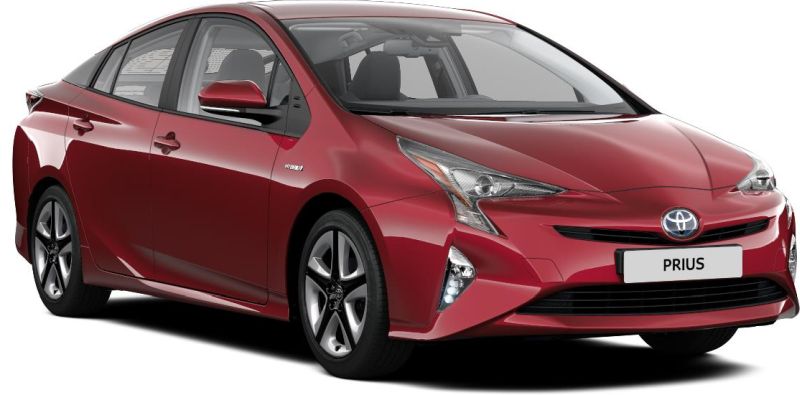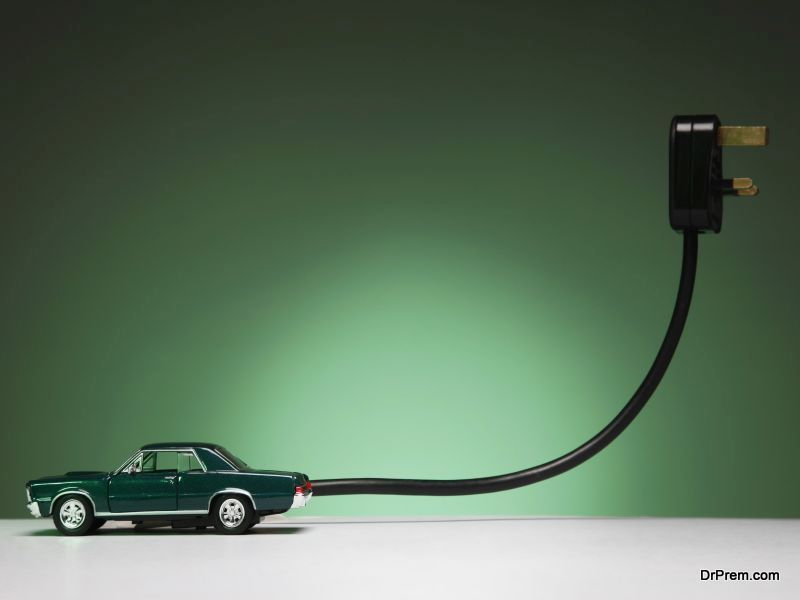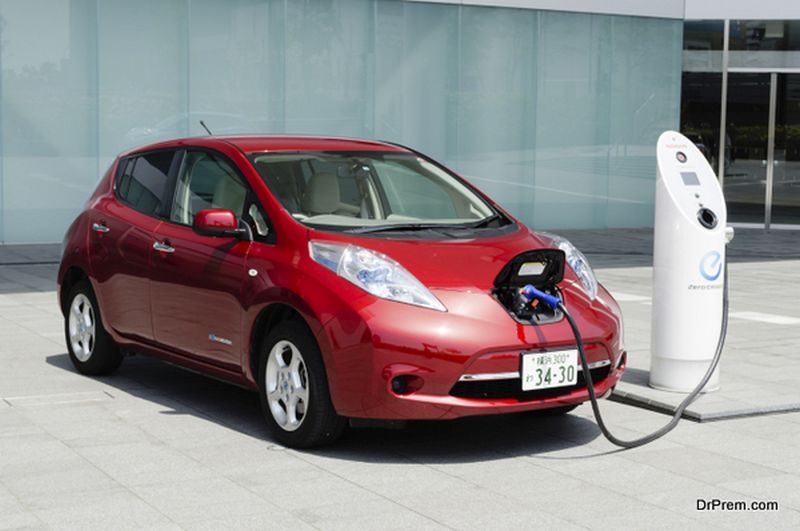The Toyota Prius is one of the most popular mass-produced hybrid cars in the world. It’s hard to believe that anything mass produced can be eco-friendly at the same time. For instance, the nickel used in the batteries is mined in Canada, shipped to Europe for refinement, shipped to China to be turned into foam, and then shipped to Japan where it’s put in the cars.
With large tankers and planes involved in shipping, the production of the Prius causes more damage to the environment than just about any other car over its lifespan. The damage occurs before it reaches the consumer.
Shortsightedness of what eco-friendly means

Image Source : images.toyota-europe.com
In 2016, Cars.com awarded the title “eco-friendly car of the year” to the Toyota Prius, citing its EPA-estimated gas mileage as 53/46/50 (city/highway/combined). That theoretical gas mileage sounds fantastic, although that’s not what happens in the real world.
The British TV show, Top Gear, experimented with a Prius and a BMW M3. Both cars were driven around a racetrack, and in the end, the BMW got better gas mileage. While the Prius got 17.2 mpg, the BMW got 19.4 mpg. Why?
The Prius weighs over 3,000 pounds, but lacks power. Its hybrid system uses an 80 horsepower electric motor at slow speeds, and adds 97 horsepower from its 1.8-liter four-cylinder when it’s moving faster. Combined, the 137 horsepower for a 3,000-pound vehicle is insufficient. Therefore, while both cars raced around the track, the Prius had to continually drive as fast as possible. The BMW only had to keep up.
Even if the Prius got 100 mpg, good gas mileage is only a small part of what makes a car eco-friendly; it’s not the whole story.
What does eco-friendly really mean?
We hear the term often, but what does it really mean?
The Merriam-Webster dictionary provides this simple definition of eco-friendly: something that isn’t environmentally harmful. By this definition, in order for the Prius to truly be eco-friendly, it needs to be harmless to the environment.
It’s fair to say that to consider a car eco-friendly, it should be eco-friendly from its inception, throughout its production, and while a customer is using it. If it harms the environment during any of these phases, it’s not eco-friendly.
Consumer use of the Prius

Image Source : media.zigcdn.com
The Prius isn’t harmless to the environment when in use; although it’s a hybrid, it still runs on gasoline and requires the use of toxic chemicals like oil, transmission fluid, and brake fluid. Additionally, at the end of its lifecycle, a Prius will end up in the scrapyard.
Is your Prius powered by dirty energy?
Electricity is electricity whether it’s wind, solar or coal that generates it. By itself, electricity appears to be a “clean” source of energy, but only from the consumer’s point of view. How electricity generates determines whether it’s clean or dirty.
If you recharge your Prius from an electrical outlet powered by the grid, then it is likely that dirty electricity powers your Prius. The power grid in the US utilizes coal for 37% of power. Its a fact that producing electricity with coal and natural gas pollutes the soil, water, and air and creates greenhouse gasses.
How clean is your electricity grid?

Harmful emissions aren’t limited to vehicles powered by gas and diesel. While electric cars have no tailpipe emissions, the Union of Concerned Scientists (UCS) points out emissions related to electricity generation. Although the Prius is a hybrid, this information applies to its electric side.
The UCS advocates the Prius not because it’s harmless, but because it’s the cleanest compromise in a dirty world.
While the Prius doesn’t fully meet the definition of eco-friendly, if you’re willing to take some risks, it can be a good car:
- The body of a Prius crumples easily in an accident, so having full coverage is imperative. The chance of injury in an accident is great. Be prepared to talk to a personal injury lawyer if you’re involved in an accident and the other driver is underinsured. Buying underinsured motorist coverage from your insurance provider is important when you drive a Prius.
- A Prius doesn’t run on those $85 batteries your mechanic has lying around the garage. If you need a new battery, expect to spend between $1,500-$2,500. Prices have dropped in recent years, but they’re still ten times more expensive than what you expect.
Perhaps what draws people to the Toyota Prius isn’t really about the environment, but rather, the opportunity to save money on fuel. There’s nothing wrong with that; however, if your goal is to save the environment, check out Toyota’s newest electric car. It runs on a unique fuel source for those who are serious about clean energy.
If you are still confused on the nuances of buying an eco-friendly car, here are a few tips and tricks on buying an eco-friendly car effectively.
7 Tips for Buying an Eco-Friendly Car
If you want to do your part to help make the planet a little greener, you can make a difference the next time you go vehicle shopping. Emissions from vehicles contribute to the world’s pollution, and some drivers can reduce their carbon footprint if they make a few small adjustments to their vehicle buying process. The next time you are in the market for a new car, pay attention. Here are seven easy tips to help you pick the perfect eco-friendly vehicle.
1. Consider a Hybrid or Electric Vehicle

First, you should consider purchasing a vehicle that either doesn’t run on gas or one that has an option to run on electric power. Today, there are more vehicle models on the market that are either hybrids or completely electric. Drivers who have electric cars also have access to more charging stations around the country as the world realizes the importance of lowering gas emissions.
2. Opt for a Manual
Electric cars and hybrids can sometimes be a little more expensive than the typical fossil fuel counterparts, so not everyone can afford this option. If a smart new eco-friendly vehicle is not in the budget, you can still make a wise purchase by changing some of your options during your search for a new car. One idea that could help reduce your carbon footprint is to go with a manual transmission. Generally, a manual transmission uses less fuel than an automatic, equalling money savings and eco-friendliness.
3. Avoid Dark Colors

Another way you can be friendlier to the planet is to choose a car with a lighter color. Instead of going with a dark-tinted car, such as navy blue, red, or black, choose a vehicle in a paler shade. Cars painted white, silver, or beige use less energy during those hot summer months. When the temperature rises outside and you use your car’s air conditioning system, it has to work much harder if your car is painted in a dark shade. Cars with lighter colors tend to stay cooler inside, and this means your air conditioning can be more efficient.
4. Skip the External Accessories
One of the biggest appeals to purchasing a new car is the idea of customizing it and getting exactly what you want. Some dealers offer consumers the option to add external accessories to their vehicles. These add-ons include items such as spoilers, roof racks, or grilles. While they may look nice, adding more stuff to the outside suspension of your car can put more weight on your vehicle. When your car is heavier, you need more fuel to power it through your journey, leading to increased fuel costs and emissions.
5. Focus on Reliability

Smart vehicle shoppers also need to narrow their focus during their search on a car that is known for being reliable. The best option for the planet and your wallet is to buy a car that will last for many years. This practice helps you avoid putting down more money for a replacement car or extensive repairs during the first few years of ownership. When more consumers choose reliable cars that last long, they can help save more energy and resources that go into vehicle production.
6. Research All Eco-Friendly Claims
It’s also a good idea to do your homework when car shopping. Some vehicle manufacturers make claims in their marketing and advertising about fuel efficiency that don’t add up. Check out online reviews from neutral parties to see if the car you’re interested in actually meets the mark. Then, research different lenders for a new or used car loan to get closer to owning the perfect vehicle. You can find out more about loans if you check out this site.
7. Go With Diesel

Finally, the last way you can increase your car’s fuel efficiency and do your part for the environment is to choose a car with a diesel fuel option. There are a few manufacturers who offer similar models in both regular fuel and diesel. With a car that uses diesel, you can get more out of your fuel mileage and even save some money. Diesel is widely available at most gas stations, so access is typically not a problem.
Your car shopping process can be much more efficient and environmentally-friendly if you follow these simple tips. Buying an eco-friendly car can help you save hundreds of dollars over time and give the planet a little more love.
Article Submitted By Community Writer
Article Submitted By Community Writer



